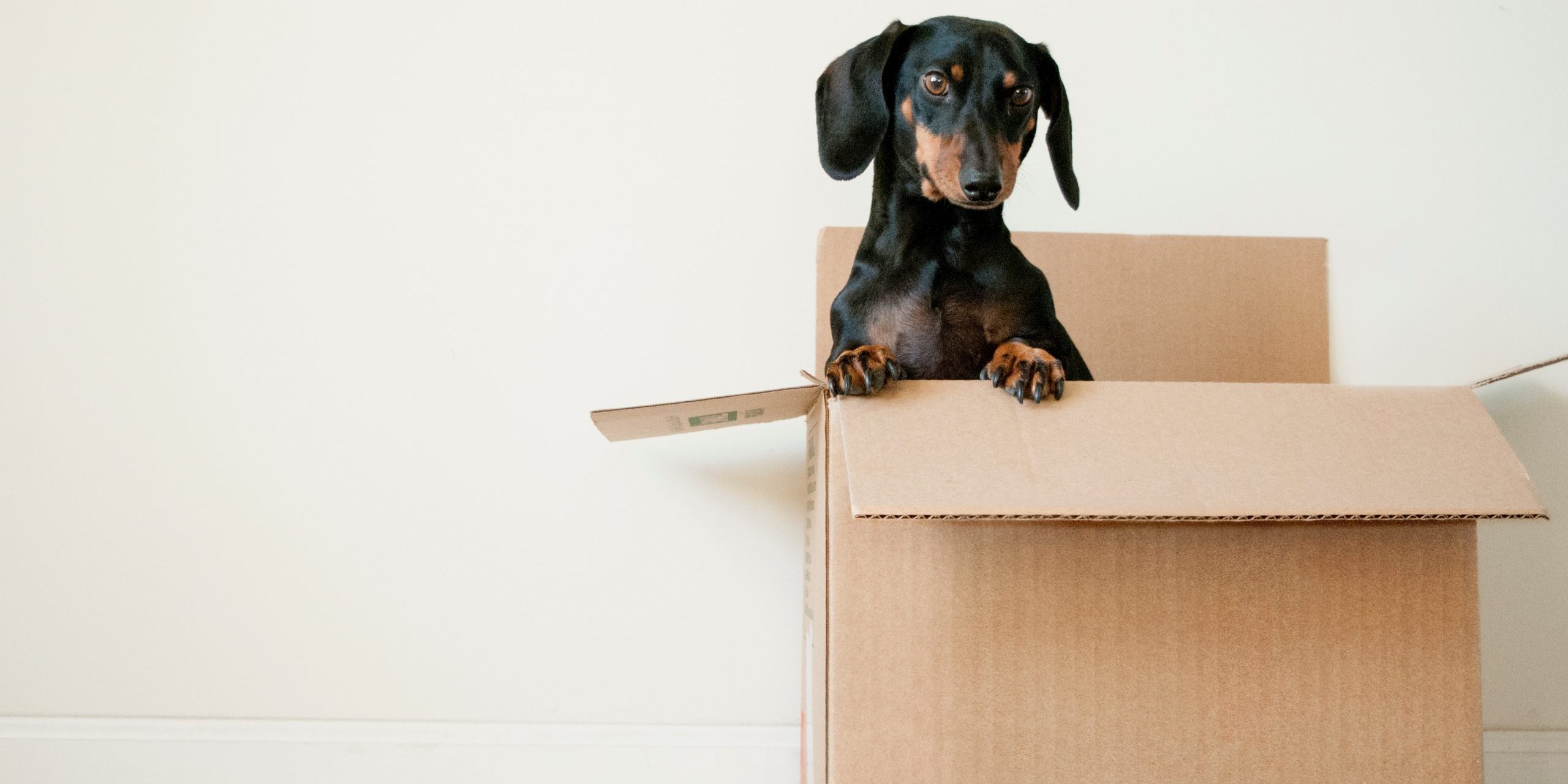Moving house a stressful time for everyone.
Having animals can contribute to the stress, as you wonder how to help your pet on moving day. Unfortunately, this doesn’t help your furry friend, and many animals pick up on their owners’ stress, excitement and anticipation as the big day approaches.
Therefore, to minimise their ordeal it’s important that you plan a smooth move for your pet too, and have plans in place for them for actual moving day and the days afterwards. Several of our Bromley Property Company team are animal lovers and have pets themselves, so understand how important it is that your beloved pet is well looked after too.
Before The Move
Don’t leave it until last minute to decide on how to help your pet on moving day. Start planning weeks or even months ahead, as depending on what time of year you are likely to move, many dog sitters and catteries get booked up a long time in advance.
If you are moving out of the area, do some research on the area you are moving to. Where will your nearest vet be? Where is the nearest emergency vet? If you have a dog, where would be a good place to take them for a walk? Knowing the answers to such questions in advance will make the move less stressful for you both.
During The Move
In most cases, the best option for what to do with pets on moving day will be to have a friend or family member look after them, away from your home. Ideally, this should be someone the pet is already familiar with and will enjoy staying with. When a friend or family member is not available, you may be able to find a local pet sitter who can look after your animal for a few hours on the day.
By doing this, the pet will be unaware of any moving day stresses, and you can concentrate on the actual move.
However, this isn’t always possible, especially if you are moving a long way, have a nervous pet, or simply don’t have anyone able to help you out- your pet may have no choice but to be at home with you. In this case, the best thing you can do is find the quietest room in the house and make sure everything has been moved out of that room in advance. Then, put the pet in that room with plenty of food and water, toilet facilities (where possible), a few favourite toys, and a warm bed. This will give them somewhere safe and secure to wait out the move.
If you have a cat or a dog, it’s worth placing a pheromone spray in the room such as Feliway for cats or Adaptil for dogs. These give off pheromones that will help to keep your pet calm and reduce their stress levels- such a great idea and something we’ve only recently discovered through a few clients recommending it!
Make sure that no one enters the pets ‘safe’ room though, the last thing you want is your pet getting out on moving day! Put a sign on the door and make sure you tell everyone involved in the move why they shouldn’t enter that room.
Post-Move
Whilst you understand why you’re in a new home, your pet won’t. It will be confused, and possibly scared in the new, unfamiliar surroundings.Be prepared for your pet being destructive, urinating on things, or just generally being disobedient. Try not to get upset with your pet for such behaviour, as this will hopefully only last a short while, and keep as calm as possible to help them settle in.
The previously mentioned pheromone spray used during the move will come in handy so be sure to use it in the new property. The technique of creating a ‘safe’ room like you did on moving day will also work wonders for your pet, giving them a place they can retreat when it all gets too much.
Make sure your new home is also ‘pet-safe’. Are there exposed cables your pet may chew on? Are there any small gaps that need blocking off so your pet doesn’t get stuck or run away? Minimise any risks.
One of the most important things is to get into a normal routine as quickly as possible. Like children, pets love routines as it takes away uncertainty and reduces anxiety. The sooner you can get things back to ‘normal’ the better. With this in mind, try and get at least one or two rooms fully unpacked and as you want them. If you have a dog, start taking it for walks at set times, and keep mealtimes the same too.

